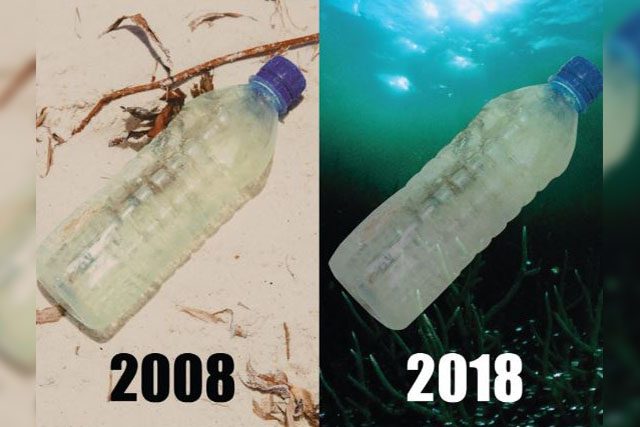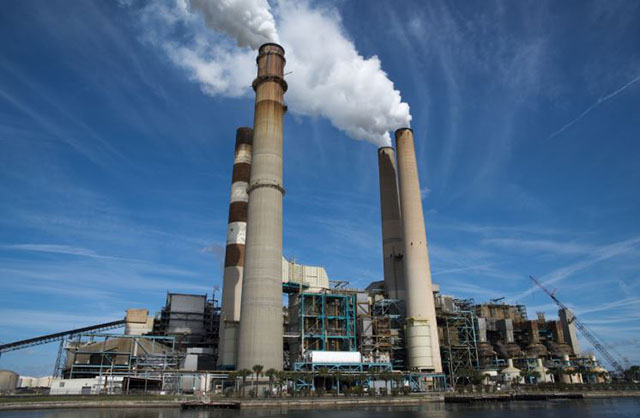
Environmental groups have joined in the social media trend known as the “10 year challenge” by sharing pictures of pollution and climate change phenomena that are threatening the Earth.
World Wide Fund for Nature (WWF) Philippines posted an image of a used plastic bottle to show the effect of plastic wastes on the environment.
Meanwhile, World Environment Magazine posted a picture of the polar ice that has melted due to global warming.
Another picture that dealt with the same message was shared by a marketing agency which challenged the public to “plant 10 trees and take care of it” for the sake of the environment.
The “10 Year Challenge” is a social media trend on different platforms where it requires a user to post “before” and “after” headshots that are 10 years apart. It usually shows how one has changed over the years.
How plastics affect the environment
Plastic wastes take a very long time to decompose since plastics are made from a petroleum byproduct that prevent them from breaking down.
The materials used for creating them are a type of polymer which means plastic molecules have great stability, making them durable.
This durability can make them last for hundreds of years below the soil once buried in a landfill.
Disposable plastic products used in everyday life can last up to 400 years while durable plastic items like bottles, disposable diapers and beer holders can remain intact for 450 years.
This leads companies and individuals to burn plastic wastes in order to dispose of them immediately. However, the process emits toxic substances into the Earth’s atmosphere.

One of the most dangerous substances emitted is dioxin, a chemical that can damage the immune system, interfere with hormones and cause cancer.
Furthermore, plastics can also cause the death of sea creatures who have been found to ingest plastic wastes thrown into the ocean.
It was said that they have been discovered inside the stomach of “more than 90 percent of the world’s sea birds, more than half of the world’s sea turtles” and of whales.
Ice caps and global warming
Experts have gathered evidence that ice caps, glaciers and arctic sea ice have been “thinning significantly over the past half century” due to the rise of the Earth’s temperature.
The rise is attributed to global warming, a phenomenon where greenhouse gases in the atmosphere absorb and trap heat, acting like a giant blanket over a person’s body.
The increased heat causes ice sheets in the polar regions to melt andmakes sea levels rise significantly.
According to the National Aeronautics and Space Administration, Greenland and Antartica have continuously lost major chunks of ice sheet on a yearly basis since 2004. Their report notes:
“Greenland has shed, on average, 303 gigatons of ice every year since 2004, while Antarctica has lost, on average, 118 gigatons of ice per year, with most of the loss coming from West Antarctica.
Greenland’s ice loss has accelerated by 31 gigatons of ice per year every year since 2004, while West Antarctica has experienced an ice mass loss acceleration of 28 gigatons per year.”
Greenland’s ice sheet, which is almost as big as Alaska, has the potential to make the sea levels rise to more than 20 meters if melted.









